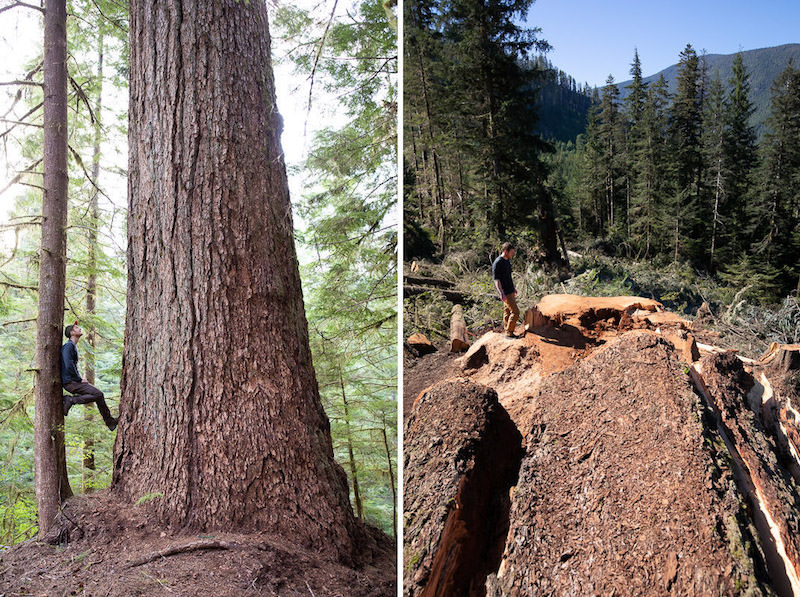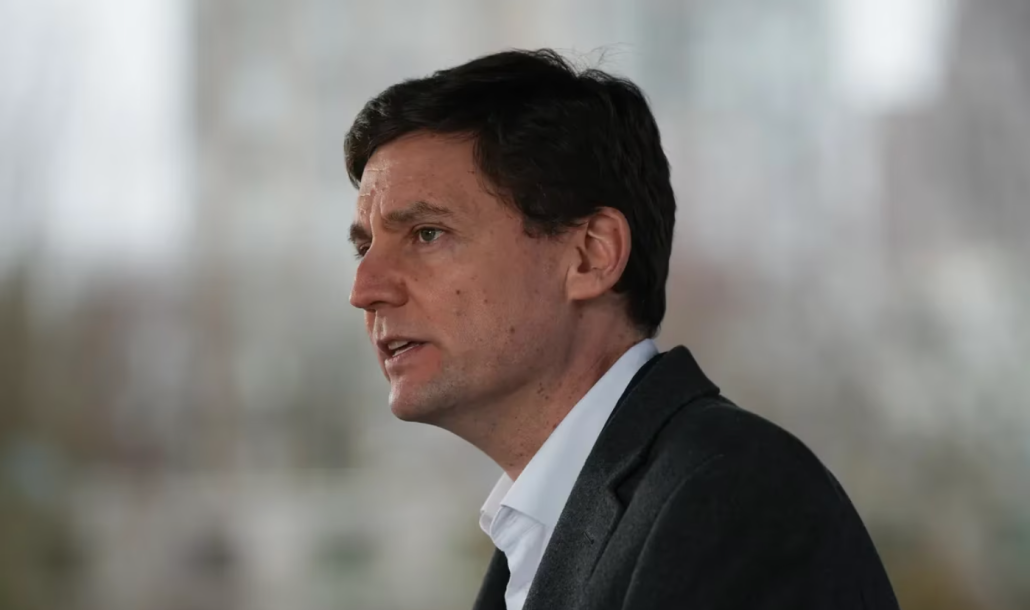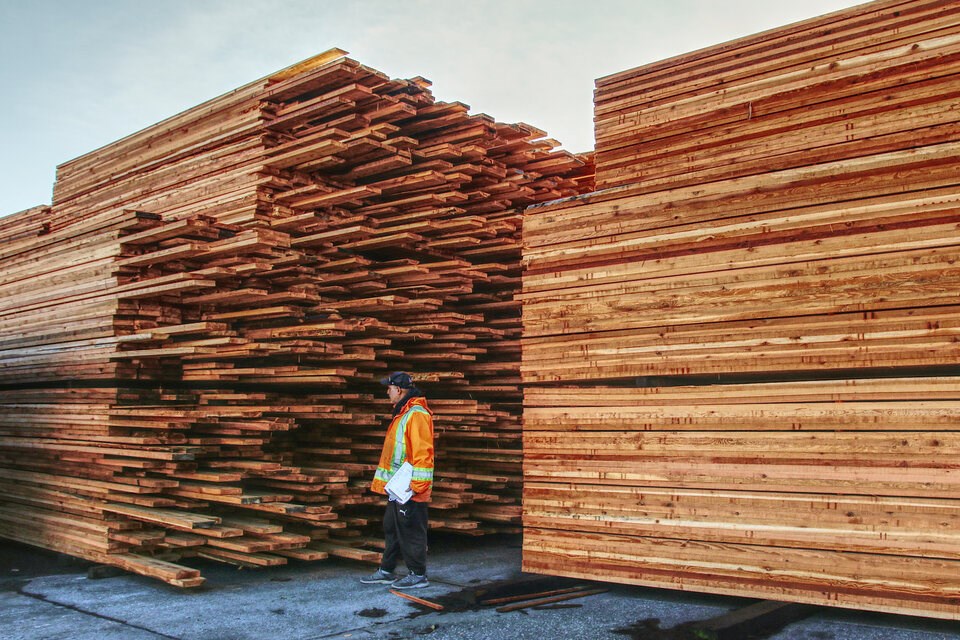 Jun 22 2018
Jun 22 2018Veteran B.C. forester weighs in on the continued logging of ancient giants
The public discussion about old-growth forests on Vancouver Island is rife with crooked thinking and trickery, and that’s a big problem. If we hope to have a mature discussion about how much of these irreplaceable natural assets should be conserved, then we need to be on the same song sheet.
But it is very, very hard to get to that place when the custodian of much of those lands — the provincial government of British Columbia — fails to disclose the basic facts on which to have an informed debate and then uses bad arithmetic to assert that there is far more old-growth forest left than is actually the case.
“It is incumbent upon our provincial government to stop the arithmetic trickery and to bring intellectual honesty and scientific thinking to a resolution of the old-growth issue on Vancouver Island.”
It’s hard not to conclude that both our provincial government and the association representing professional foresters in our province are deliberately trying to ensure that the public doesn’t see the forest for the trees.
Anyone who cares about our forests knows that there are essentially two camps that are at odds with one another. On the one hand, we have the industry/government camp (B.C. government, corporations and the Association of B.C. Forest Professionals) advocating the logging of the few remaining unprotected giant, ancient forests. On the other hand, we have the public camp (the general public, conservationists, some unions and non-governmental organizations) advocating the protection of these forests.
The differences between these two camps begin with definition. The logging companies, government and the ABCFP define old-growth forests as being any forest over 250 years old. Engaged members of the public, on the other hand, tend to think of old-growth forests as the original, productive, forests found at lower elevations on gentle slopes and in valley bottoms — the places where large ancient trees and a rich diversity of animal and plant life are found (or at least used to be found) in abundance.
It is these incredibly productive and ecologically diverse forests about which the general public are most concerned — a fact well known by government, the logging industry and the ABCFP.
So, to get on the same song sheet, let’s pose the three essential questions in the public interest:
- What was the area of original, productive, old-growth forest at low elevation (less than 300 metres) on gentle slopes (
- What is the remaining area of unprotected original, productive, old-growth forest at low elevation on gentle slopes on Vancouver Island?
- What is the remaining area of protected original, productive, old-growth forest at low elevation on gentle slopes on Vancouver Island?
These three questions are not easily answered because the “publicly available” data the government chooses to provide is deliberately and woefully incomplete, in particular for Vancouver Island.
Specifically, the data for most Tree Farm Licences (or TFLs), which constitute large areas of forestland where single corporations hold sway, are not available. Nor are good data on the extent of old-growth forests on private lands, which constitute a huge proportion of Vancouver Island. This lack of readily available data is a big problem, because only about 40 per cent of Vancouver Island is Crown land outside TFLs. Also, government information on the Crown land within TFLs is either missing or unavailable to the public.
So, on this score, the forests ministry has been woefully negligent in not providing the inventory facts for informed debate and straight thinking. Instead, it has supported the industry/government camp with crooked thinking and incomplete fact sheets.
For example, quoting a government fact sheet, the ABCFP recently stated in a November 2017 op-ed in the Times Colonist that Vancouver Island had massive amounts of old-growth forest remaining:
“Vancouver Island, which is 3.28 million hectares in size, has 2.4 million hectares of Crown land (of which) 860,000 hectares of that Crown land (46 per cent) is old growth forest and of that, about 520,000 hectares (62 per cent) is estimated to be protected,” the ABCFP boldly asserted.
If this is not a great example of crooked thinking, I don’t know what is. By the government and ABCFP’s logic, the more we log the remaining unprotected old growth, the more percentage of protected area we get!
So, using one of the most complete inventories for Vancouver Island, I asked a biologist, who specializes in analysis with geographic information systems, to answer the three questions of interest to the general public. And here are the answers that the forests ministry cannot, or will not, provide:
- Original, Productive, Old Growth Forest at Low Elevation on Gentle Slopes on Vancouver Island = 459,000 ha (100%)
- Remaining Unprotected Original, Productive, Old Growth Forest at Low Elevation on Gentle Slopes on Vancouver Island = 33,200 ha (7%)
- Remaining Protected Original, Productive, Old Growth at Low Elevation on Low Slope on Vancouver Island = 26,600 ha (6% — Note that only 21,600 ha (5%) are truly protected within parks.)
It is incumbent upon our provincial government to stop the arithmetic trickery and to bring intellectual honesty and scientific thinking to a resolution of the old-growth issue on Vancouver Island.
To do that, the government should refer the question of what remains of our old-growth forests on Vancouver Island to an independent, scientific panel tasked to look at how much original old-growth forest is protected and how much remains for each type of major ecosystem, and where it is. There is plenty of expertise at the University of Victoria to do just that.
I suspect that such a panel would quickly conclude that the original, productive, old-growth forest below 300 metres elevation on slopes under 17 per cent (the most ecologically diverse and productive ecosystem for animals and plants) that is truly protected on Vancouver Island in parks (less than 5%) is scarce and woefully under-represented compared to the areas protected for other types of old-growth forest.
Premier Horgan and Ministers Donaldson and Heyman: let’s see action on your election promise “to modernize land-use planning to effectively and sustainably manage B.C.’s ecosystems … forests and old growth (and to) take an evidence-based scientific approach.”
Anthony Britneff worked for the B.C. Forest Service for 40 years, holding senior professional positions in inventory, silviculture and forest health.






